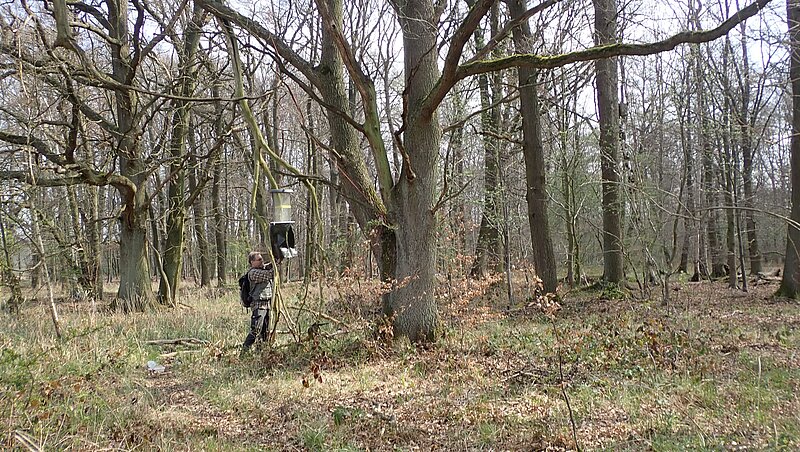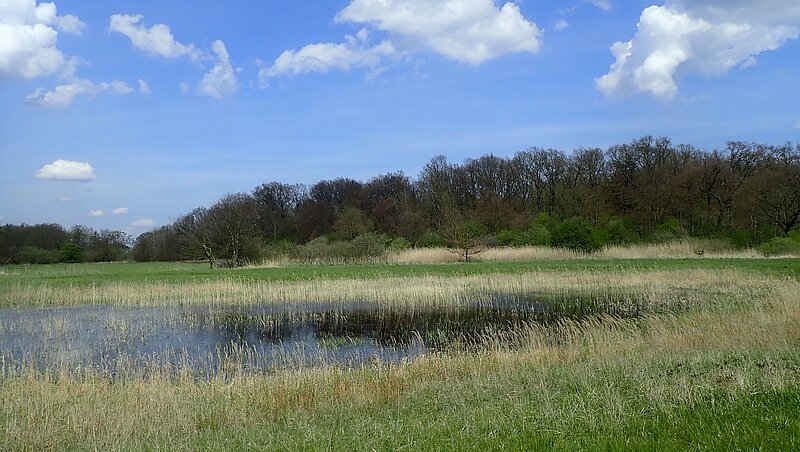We are interested in faunistics of beetles (Coleoptera) and true bugs (Heteroptera) in Germany, and in particular the state of Lower Saxony, continuously contributing distribution data to online-catalogues (e.g. http://www.colkat.de/de/fhl/?w=1600&h=700). Questions addressed here are, among others, the impact of climate change and invasive species on insect biodiversity and its loss (insect decline). In a loosely organized group of expert and amateur entomologists, we actively collect data in the field and discuss relevant topics in monthly seminars.
In a long-term project together with the German Nature and Biodiversity Conservation Union (NABU) we study the biodiversity of beetles and true bugs in a nature protected area east of Hannover (NSG Hämelerwald und Sohrwiesen) over time. Within seven years, we already recorded over 1300 beetle species and close to 200 species of true bugs in an area of ca. 120 ha.
Supported by communal authorities (Fachbereich Umwelt und Stadtgrün), we monitor the development of insect biodiversity in a project (Insektenbündnis Hannover) in urban areas where wildflowers were sown in replacement of frequently mown lawns. The work is partially done by students as part of their Bachelor theses. A poster of an intermediate result can be seen here.
In a current three-year project, we are investigating the beetle fauna in FFH area 108 (Bockmerholz, Gaim) on the outskirts of Hannover. We are working together with the Lower Saxony State Forestry Authority, the North German Forestry Research Institute, the Region Hannover as the lower nature conservation authority, and the Ökologische Station Mittleres Leinetal (ÖSML).
We introduce interested students to field entomology in a compulsory elective module in the Bachelor's degree program in Biology. To this end, we developed open online teaching materials (OER) in 2024, funded by the TIB and the MWK Lower Saxony, and made them available on the OER platform Twillo. Download here.

Literature
Stern M (2014) Nachweis von Ampedus elegantulus (Schönherr, 1817) für die Region Hannover (Coleoptera, Elateridae). Coleo 15: 1-4. http://www.coleo.de/.cm4all/uproc.php/0/PDFs/2014/Stern%20Ampedus%20elegantulus.pdf?_=17a8728eaad&cdp=a
Stern M (2015): Pselactus spadix (Herbst, 1795) – Wiederfund für Brandenburg (Coleoptera, Curculionidae). Ent Nachr Ber 59: 202.
Melber A, Stern M (2016): Ergänzungen zur Kenntnis der Wanzenfauna von Niedersachsen und Bremen (Insecta: Heteroptera) – Heteropteron 46: 7-12. http://www.heteropteron.de/downloads/hetero-46.pdf
Stern M (2022) Oxycarenus lavatherae (Fabricius, 1787) und Arocatus melanocephalus (Fabricius, 1798) neu für Niedersachsen sowie weitere Funde seltener Wanzen aus Niedersachsen (Insecta: Heteroptera). Heteropteron 65: 3-6. http://www.heteropteron.de/downloads/hetero-65.pdf
Apel A, Durna DC, Schmidt M, Sprick P, Stern M (2023) Cryptocephalus schaefferi (Schrank, 1789) – neu für Niedersachsen (Coleoptera, Chrysomelidae). Ent Nachr Ber 67: 254-255.
Zitzmann F, Stern M, Schmidt M, Schirmel J (2024) Carabid beetles in solar parks: Assemblages under solar panels are severely impoverished compared to gaps between panel rows and edge areas. J Insect Conserv (2024) https://doi.org/10.1007/s10841-024-00597-w
Stern M (2024) Ein Fund von Anillus caecus Jacquelin du Val, 1851 (Coleoptera, Carabidae) in Niedersachsen Ent Nachr Ber 68: 189-190
Höfling J, Stern M (2025) Erstnachweise der Rindenkäferarten Synchita separanda REITTER, 1882 und Synchita mediolanensis VILLA & VILLA, 1822 (Coleoptera, Zopheridae) für Niedersachsen. Ent Nachr Ber 69: (accepted for publication)








